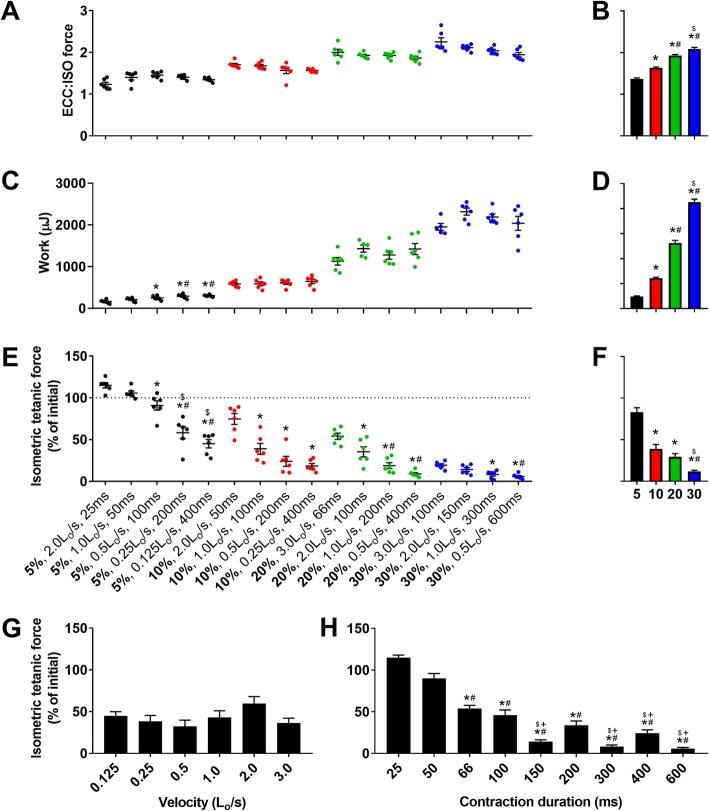Fig. 1.
Mechanical factors that impact the sensitivity of mdx EDL muscle to ECC ex vivo. a Maximal eccentric force as a fraction of maximal isometric tetanic force for each eccentric protocol and b when grouped into length changes. c Work completed during the first contraction of each eccentric protocol and d when grouped into length change. Different from *5%, #10%, and $20%. e Maximal isometric tetanic force (120 Hz) following 10 eccentric contractions as a percent of maximal isometric force before ECC (initial). Different from the *first, #second, and $third protocol within a given length change. f Isometric tetanic force as a percent of initial for each protocol when collapsed into length changes and g velocities. Different from *5%, #10%, and $20%. h Isometric tetanic force as a percent of initial for each protocol when grouped into contraction durations. Lo, optimal muscle length. Different from *25 ms, #50 ms, $66 ms, and +100 ms. Data are mean ± S.E.M with significance set at p < 0.05. N = 5–6/protocol

